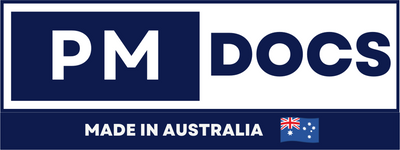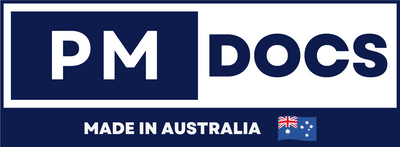AI Policy Template For Australian Companies
Introduction
In today's rapidly evolving digital landscape, the integration of Artificial Intelligence (AI) into business operations is no longer a futuristic concept but a present-day reality. Australian companies are increasingly adopting AI technologies to streamline operations, enhance customer experiences, and gain a competitive edge. However, with great power comes great responsibility. The ethical implications and governance of AI usage necessitate the formulation of a comprehensive AI policy.

Understanding AI Policy
Before diving into the specifics of an AI policy, it’s crucial to understand what it encompasses. An AI policy is a set of guidelines and principles designed to govern the development, deployment, and usage of AI technologies within an organization. This policy ensures that AI implementation aligns with the company's values, ethical standards, and compliance requirements.
Why Is An AI Policy Important?
The importance of an AI policy cannot be overstated. It serves multiple purposes, including:
-
Ethical Guidance: Ensures AI technologies are used responsibly and ethically.
-
Risk Management: Helps identify and mitigate potential risks associated with AI.
-
Compliance: Assures adherence to legal regulations and standards.
-
Trust Building: Enhances transparency and trust with stakeholders.
Key Components Of An AI Policy Template
Creating an AI policy involves several critical components that address various aspects of AI usage within an organization. Below are the essential elements to consider:
1. Purpose and Scope
Define the purpose of the AI policy and its scope within the organization. This section should outline the objectives of integrating AI and the areas of application.
2. Ethical Principles
Establish a set of ethical guidelines that govern AI usage. These principles should include fairness, transparency, accountability, and privacy protection. They serve as the foundation for ethical AI practices.
3. AI Governance Structure
Define the governance structure for AI initiatives. This involves designating responsible personnel or teams for overseeing AI implementation and ensuring adherence to the policy.
3. Roles and Responsibilities
Outline the roles and responsibilities of individuals involved in AI projects. This includes data scientists, IT personnel, compliance officers, and management.
4. Risk Assessment and Management
Identify potential risks associated with AI technologies and establish a framework for risk assessment and management. This involves regular monitoring and evaluation of AI systems to mitigate any negative impacts.
5. Data Management and Privacy
Data is the backbone of AI technologies, making data management and privacy crucial components of an AI policy. This section should cover:
-
Data Collection: Guidelines for ethical data collection practices.
-
Data Usage: Policies on how data is used and who has access.
-
Data Security: Measures to ensure data protection and prevent breaches.
6. Compliance and Legal Considerations
Ensure that AI practices comply with Australian laws and regulations, such as the Privacy Act 1988 and other relevant standards. This section should address:
-
Legal obligations
-
Industry-specific regulations
-
International compliance standards, if applicable
7. Training and Awareness
Implement training programs to raise awareness about AI policy and its importance. This includes educating employees on ethical AI usage and compliance requirements.
8. Monitoring and Evaluation
Establish a system for continuous monitoring and evaluation of AI systems. This ensures that AI technologies remain effective, ethical, and compliant over time.
9. Review and Updates
AI technology is continuously evolving, and so should your AI policy. Set a schedule for regular reviews and updates to the policy to keep pace with technological advancements and regulatory changes.
AI Ethics And Australian Companies
AI ethics is a critical consideration for Australian companies as they integrate AI into their operations. Ethical AI usage involves ensuring fairness, transparency, and accountability in AI systems. Companies must prioritize these principles to build trust with customers and stakeholders.
1. Fairness
Ensure that AI systems do not perpetuate biases or discrimination. Implement measures to detect and eliminate bias in AI algorithms.
2. Transparency
Maintain transparency in AI operations by providing clear information about how AI systems work and how decisions are made.
3. Accountability
Establish accountability mechanisms to address any issues arising from AI usage. This includes having processes for reporting and resolving ethical concerns.
Implementing Your AI Policy
To effectively implement your AI policy, follow these steps:
-
Engage Stakeholders: Involve key stakeholders in the policy development process to ensure buy-in and alignment with organizational goals.
-
Communicate Clearly: Clearly communicate the AI policy to all employees and provide training to ensure understanding and compliance.
-
Monitor Progress: Regularly monitor AI initiatives to assess their effectiveness and compliance with the policy.
-
Adapt and Improve: Continuously improve AI practices based on feedback and technological advancements.
Conclusion
An AI policy is an essential tool for Australian companies seeking to harness the power of AI responsibly and ethically. By following the outlined AI policy template, organizations can establish a framework that promotes ethical AI usage, mitigates risks, and ensures compliance with legal standards. As AI technologies continue to evolve, staying informed and proactive in policy development will be key to maintaining a competitive edge and building trust with stakeholders.
By implementing a comprehensive AI policy, Australian companies can navigate the complexities of AI technology while aligning with ethical and legal standards, ultimately driving innovation and success in the digital age.



